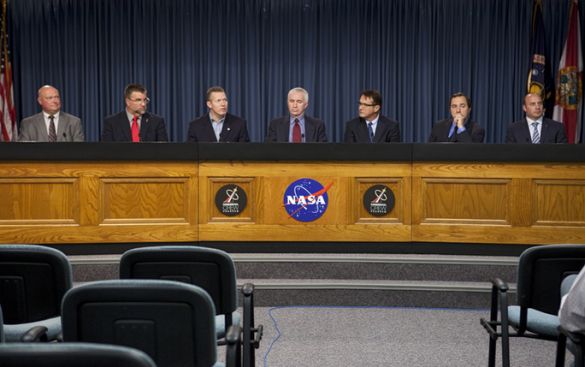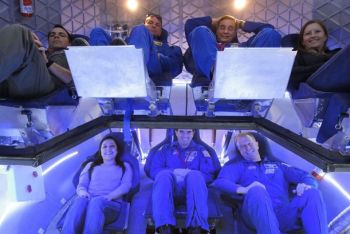Commercial Firms Report Spacecraft Progress
By Space Coast Daily // January 10, 2013
NASA's CCDEV2 Partners Update Recent Work

BREVARD COUNTY • KENNEDY SPACE CENTER, FLORIDA – In updating the progress made by private commercial space companies in launching manned crews to the International Space Station, four NASA Commercial Crew Program (CCDEV2) partners were optimistic and upbeat about the future at Kennedy Space Center in a press briefing on Wednesday.
Four companies were chosen by NASA in April 2011 for the program, which proposes to develop advanced commercial crew space transportation system concepts, launch vehicles and spacecraft.

Its goal is to accelerate the availability of U.S. commercial crew transportation capabilities and reduce the gap in American human spaceflight capability following the end of the space shuttle program.
The second phase of the CCDEV2 Certification Products Contract will begin by mid-2014 and involve a full and open competition to include the final development, testing and verifications required to launch manned demonstration flights to the ISS
NASA has spent more than $1.5 billion in helping the four firms develop new spacecraft vehicles and will ramp up activity leading to the start of the CCDEV2 Certification Products Contract.
Here’s an update by company of progress made so far:
SpaceX
SpaceX has made two successful flights to the ISS in 2012, demonstrating the ability to dock and deliver cargo using its Dragon spacecraft.
The company is now working on developing an escape system for astronauts on board the Dragon should an emergency or accident occur.
Garrett Reisman of SpaceX said that the company also is currently testing a new Super Draco” engine for the purpose of affording astronauts escape thrusting capability during blastoff.
Reisman said later this year SpaceX hopes to launch a Dragon from Cape Canaveral Air Force Station that will test its launch-abort system.
This is a run-up to a SpaceX active abort test sometime in 2014 in which a Dragon will blast away from a Falcon 9 rocket that is in fight.
Reisman said SpaceX remains committed to launch its first manned spacecraft to the ISS in 2015.

Sierra Nevada
Sierra Nevada is moving closer to construction of its first full-scale Dream Chaser spacecraft.
Using a design similar to the space shuttle, the Dream Chaser is supposed to return to Earth on a runway.
Sierra Nevada’s director of space systems Mark Sirangelo said engineering tests have been made by the company in Colorado.
Sirangelo said the Dream Chaser also completed docking simulator and rocket-engine testing for its orbit maneuvering system.
It will conduct an autonomous landing test sometime later this year for the Dream Chaser.
Boeing
Work is intensifying on Boeing’s new CST-100 spacecraft.
According to John Mulholland, Boeing’s Commercial Programs Space Exploration vice president and program manager, the CST-100 has wrapped up a series of parachute drop tests using a full-scale CST-100 model that was equipped with airbags and parachutes.
Working in conjunction with NASA astronauts, Boeing examined possible control and display layouts, conducted simulated meteor impact tests and reviewed automated spacecraft rendezvous and docking software.

Blue Origin
Blue Origin president Rob Meyerson said the company is working on constructing a new vertical-takeoff and vertical-landing rocket that will be able to fly to the ISS.
He said the company tested a launch-abort system last year in which a full-scale model of a proposed crew capsule lifted off and using its parachutes, was able to land within 7 feet of a planned target.
Meyerson said the Blue Origin reusable biconic spacecraft could make multiple flights with minimal maintenance.
Blue Origin’s also will test of a new hydrogen/liquid-oxygen-powered rocket engine that offers more than 100,000 pounds of thrust.
Meyerson said the new engine will be tested later this year.












